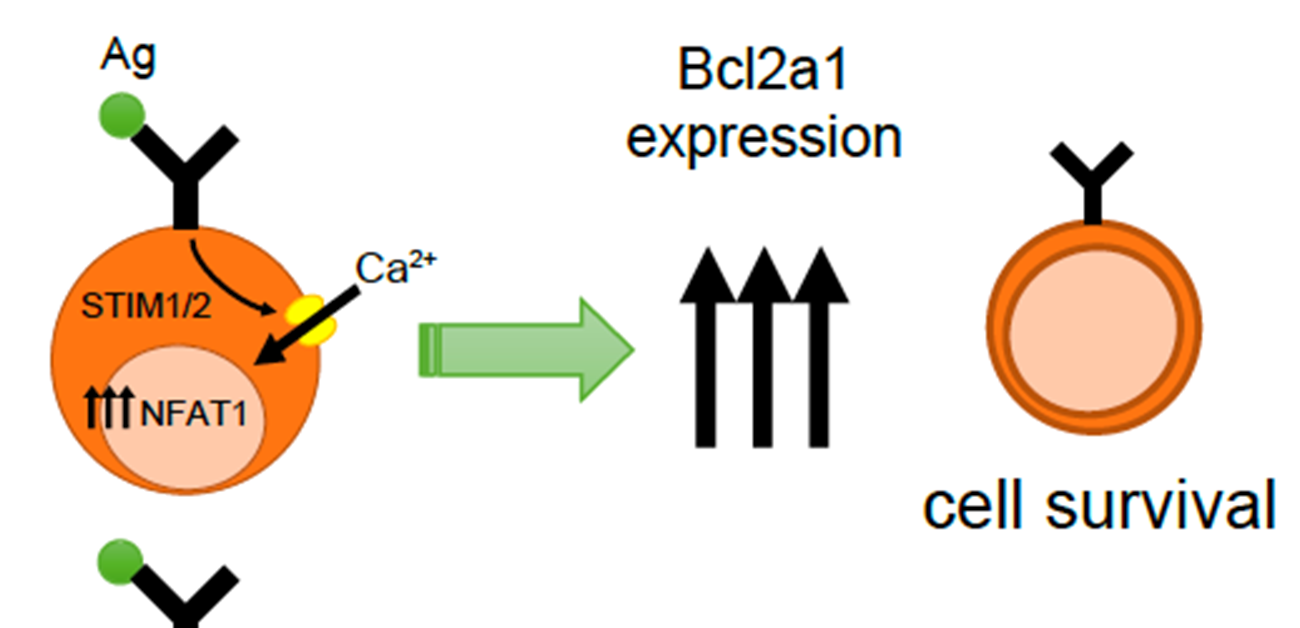
STIM-mediated calcium influx regulates maintenance and selection of germinal center B cells
Germinal centers (GCs) are specialized microenvironments where antigen (Ag)-specific B cells undergo antibody affinity maturation and clonal expansion. Positive selection of high-affinity GC B cells is driven by Ag internalization through their B cell receptor (BCR) and presentation to follicular helper T (Tfh) cells. However, the requirements of BCR signaling in GC B cells remain poorly understood. Store-operated Ca2+ entry, mediated by stromal interacting molecule 1 (STIM1) and STIM2, is the main Ca2+ influx pathway triggered by BCR engagement. Yutaro Yada, Masanori Matsumoto, Tomohiro Kurosaki, Yoshihiro Baba, and the research group showed that STIM-deficient B cells have reduced B cell competitiveness compared to wild-type B cells during GC responses. B cell-specific deletion of STIM proteins decreased the number of high-affinity B cells in the late phase of GC formation. STIM deficiency did not affect GC B cell proliferation and Ag presentation but led to the enhancement of apoptosis due to the impaired upregulation of anti-apoptotic Bcl2a1. STIM-mediated activation of NFAT was required for the expression of Bcl2a1 after BCR stimulation. These findings suggest that STIM-mediated survival signals after Ag capture regulate the optimal selection and maintenance of GC B cells.
GCs are comprised of a dark zone where B cells undergo clonal expansion and somatic hypermutation in the immunoglobulin gene and a light zone where B cells capture Ags on follicular dendritic cells (FDCs) and present these to Tfh cells. In the light zone, high-affinity GC B cells receive a survival signal through induction of the anti-apoptotic bcl2a1 gene, which is required for NFAT activation by STIM-mediated Ca2+ influx upon Ag stimulation. Thus, the B cell survival after Ag recognition in GCs may promote affinity maturation by increasing the probability of receiving Tfh cell assistance.
The article, "Visualization and analysis of skin strain distribution in various human facial actions," has been published in the Mechanical Engineering Journal at DOI: http://doi.org/10.1084/jem.20222178.
